- Joined
- Oct 29, 2012
- Messages
- 1,328
Looking at the diamondback nozzle I bought, I can't tell about roughness because now it's got molten plastic on it. But in this screenshot from the video Boswell posted, it doesn't look all that smooth at all.Yes, my comment was w/regard to the nozzle, nothing else.
Based on information I found on the web, the Diamondback nozzles use a composite that contains diamond particles. It's possible that the surface isn't as smooth as brass. I base my hypothesis on the fact that diamond is very hard, so any polishing agent capable of polishing diamond would likely be more aggressive toward the binder, leaving the diamond particles a bit "proud" of the surface. Depending on the binder and polishing agent, the roughness might not be all that apparent to the naked eye....or, for that matter, anything less than a high-power microscope or SEM.
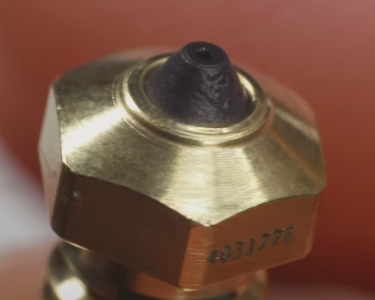
Ok I sorta have that answer now. I tested reamed and lapped barrels today, using the same 4 filaments I tested yesterday with the diamondback nozzle.It would be interesting to see how a lapped/polished brass nozzle would perform, considering your observation regarding the one you ran the reamer through.
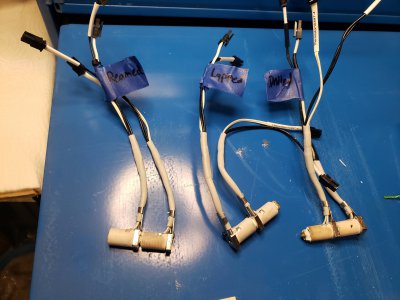
I tested reamed first, then lapped. The data is in the table below but in the course of testing my performance with the flexible filaments took a nosedive somewhere during the tests of the lapped barrel. The housing that holds the extruder together developed a lot of slop; I think the plastic got soft and creeped, allowing the bearings to move around, and this movement gave the flexible filaments new options for places (other than down the hole) to wander off too. I will need to print a new housing for it, out of polycarbonate so it doesn't happen again, and I think I will modify the OmniaDrop design to make it a little more robust.
| Material: | Polymaker Polysonic PLA | |||||||
| Hotend/extruder | Temp | Nozzle size | mm/s of filament | Gcode | mm^3/s volumetric | measured weight (g) | over/under | Gains: |
| Omnia DOUBLE Volcano (drilled) | 245 | 0.8 brass reamed | 30 | G1 E415.75 F1800 | 72.2 | 1.214 | 98% | 0% |
| Omnia DOUBLE Volcano (reamed) | 245 | 0.8 brass reamed | 33 | G1 E415.75 F1980 | 79.4 | 1.208 | 97% | 10% |
| Omnia DOUBLE Volcano (lapped) | 245 | 0.8 brass reamed | 38 | G1 E415.75 F2280 | 91.4 | 1.214 | 98% | 27% |
| Material: | Overture High Speed TPU (95A) | |||||||
| Hotend/extruder | Temp | Nozzle size | mm/s of filament | Gcode | mm^3/s volumetric | measured weight (g) | over/under | Gains: |
| Omnia DOUBLE Volcano (drilled) | 240 | 0.8 brass reamed | 27 | G1 E415.75 F1620 | 64.9 | 1.229 | 98% | 0% |
| Omnia DOUBLE Volcano (reamed) | 240 | 0.8 brass reamed | 27 | G1 E415.75 F1620 | 64.9 | 1.229 | 98% | 0% |
| Omnia DOUBLE Volcano (lapped) | 240 | 0.8 brass reamed | 27 | G1 E415.75 F1620 | 64.9 | 1.222 | 97% | 0% |
| Material: | CoexFlex 30D (~78 Shore A) | |||||||
| Hotend/extruder | Temp | Nozzle size | mm/s of filament | Gcode | mm^3/s volumetric | measured weight (g) | over/under | Gains: |
| Omnia DOUBLE Volcano (drilled) | 245 | 0.8 brass reamed | 10 | G1 E415.75 F600 | 24.1 | 1.000 | 100% | 0% |
| Omnia DOUBLE Volcano (reamed) | 245 | 0.8 brass reamed | 11 | G1 E415.75 F660 | 26.4581006 | 0.973 | 97% | 10% |
| Omnia DOUBLE Volcano (lapped) | 245 | 0.8 brass reamed | 8 | G1 E415.75 F480 | 19.242 | 0.978 | 98% | -20% (*) |
| Material: | CoexFlex 60A | |||||||
| Hotend/extruder | Temp | Nozzle size | mm/s of filament | Gcode | mm^3/s volumetric | measured weight (g) | over/under | Gains: |
| Omnia DOUBLE Volcano (drilled) | 230 | 0.8 brass reamed | 2.75 | G1 E415.75 F165 | 6.6 | 1.173 | 100% | 0% |
| Omnia DOUBLE Volcano (reamed) | 230 | 0.8 brass reamed | 3.25 | G1 E415.75 F195 | 7.8171661 | 1.164 | 99% | 18% |
| Omnia DOUBLE Volcano (lapped) | Did not test - extruder falling apart |
There is not quite enough data there for a solid trend, but based on the 12 hours I just spent doing this, which the table can't convey, I'm saying that Lapped is way better than reamed, which is way better than nothing. And that's weird because the lapped barrels don't look near as good as the reamed ones. I think I did it wrong or something because the lapped barrels actually look pretty bad, and I almost didn't even bother testing them. The reamer leaves a mirror shine, and the barrel laps leave what looks like tiny-scale orangepeel in a bad car paint job.
Sorry this is really hard to take a picture of, but...
Here is the barrel before doing anything:
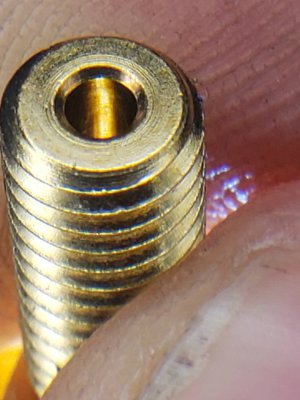
Here is the reamed barrel (note that you can make out the individual LEDs in the COB array of my backlight):
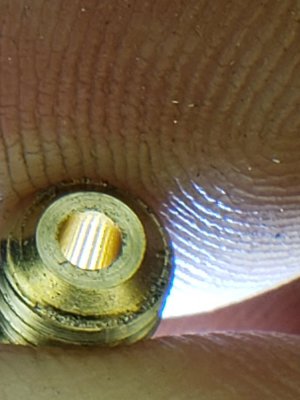
And here is the lapped barrel:
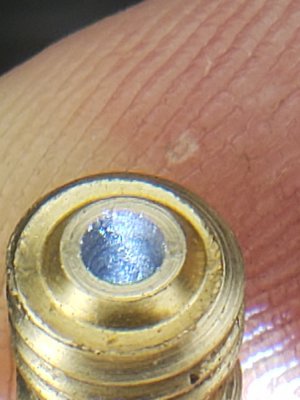
Based on this, I am thinking maybe @Dabbler is on the right path with suggesting chaotic flow to mix up the hot and cold parts of the filament. So when I get this extruder fixed I'm going to finish/re-test the flexibles and test yet another barrel type: deliberately destroyed ID (or maybe just threaded ID).


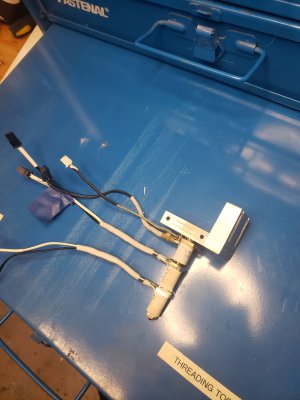
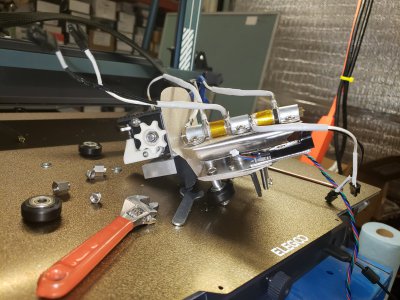
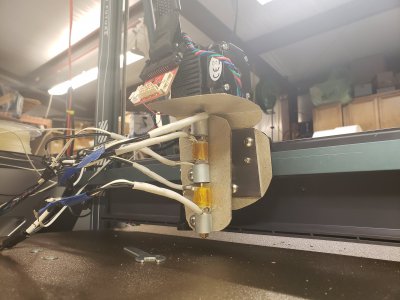
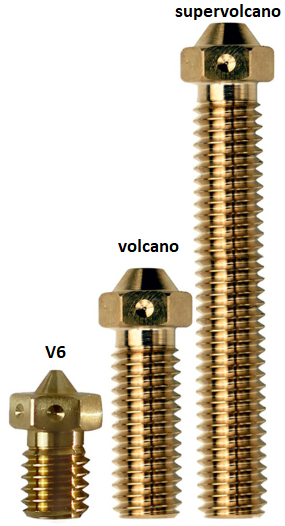
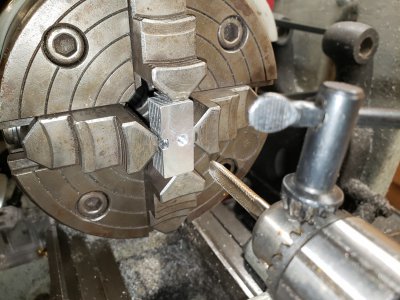
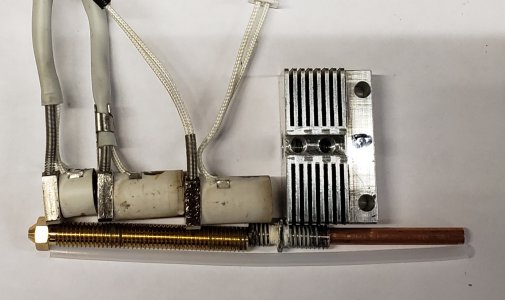
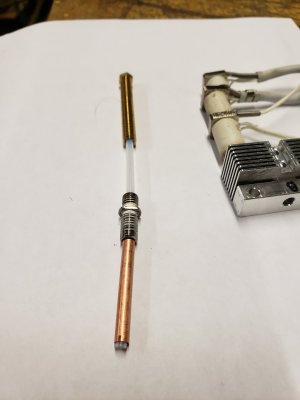
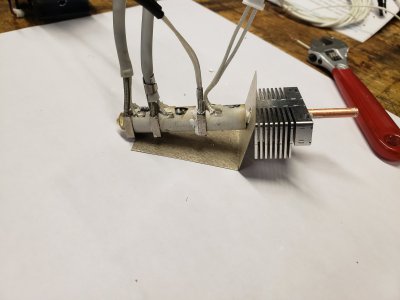
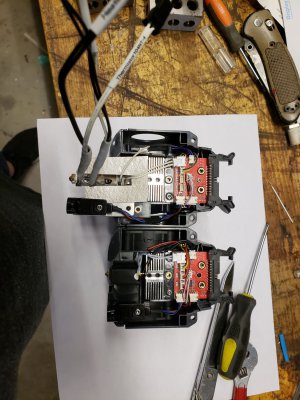
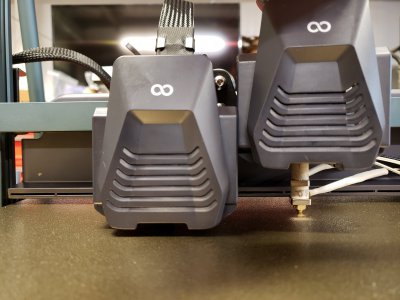
 I think (someone correct me if I'm wrong) the heatbreak is like an orifice valve tapped into the bottom of a bucket with 12" of water in it. If you exchange the bucket for an above ground pool then still, if there is only 12" of water in the pool, the same amount of water will get through the orifice.
I think (someone correct me if I'm wrong) the heatbreak is like an orifice valve tapped into the bottom of a bucket with 12" of water in it. If you exchange the bucket for an above ground pool then still, if there is only 12" of water in the pool, the same amount of water will get through the orifice.